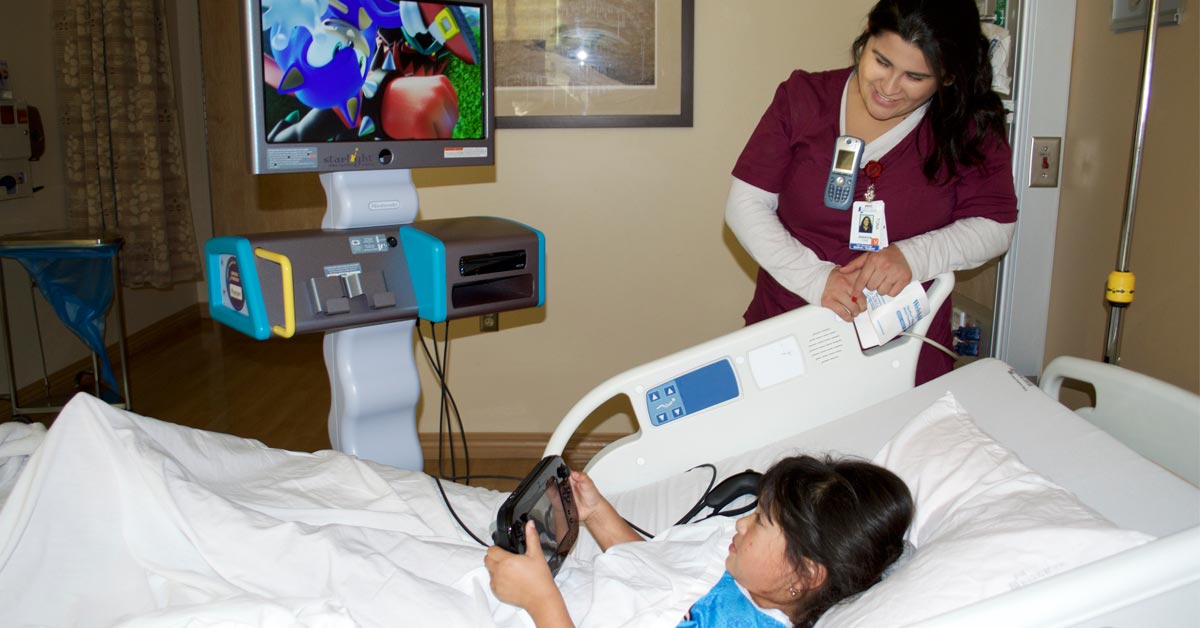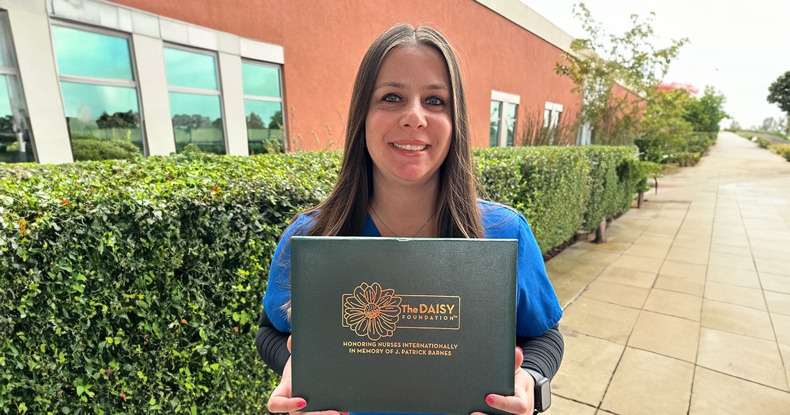Youngest Patients Can Play Nintendo While They Heal
- Category: LVMC Updates
- Posted On:
- Written By: Belinda Hammond

Our youngest patients now have a little more to do while they’re healing. Thanks to Lompoc’s ChildLife Connection and the Starlight Children’s Foundation, LVMC was the recipient of a state-of-the-art Starlight Fun Center mobile entertainment unit. Powered by the latest WiiU system from Nintendo, the Starlight Fun Center offers online access to family-friendly video games, movies, documentaries and educational content.
Fun Centers roll anywhere indoors to provide seriously ill or injured children and their families with the healing power of play through hours of fun, distraction and a much-needed sense of normalcy while in the hospital, according to the foundation. To a hospitalized child, a Fun Center unit helps combat boredom and loneliness through access to popular games like Mario Kart, Smash Bros, Madden NFL, NBA 2k13 and more.
Starlight, ChildLife Connection and LVMC have a long-standing relationship, enabling the medical center to provide toys, crafts, and books as distractions for children recovering from surgeries or injury. While LVMC does not have a specialized pediatric wing or unit, its medical and nursing staff routinely offer treatment and care to hospitalized youngsters.
Since the early 1920s, the need became evident to hospitals that for those with illness or injury, having an environment for children focusing on emotional stability and healthy development was a critical way to help alleviate the fear and pain associated with being in the hospital.
Earliest programs focused on play, but as the field continued to grow, programs evolved as hospital staffs began to learn about the developmental needs of children and the potential negative effects associated with hospitalization and separation from family.
With that understanding, in 1967 the Association for the Well Being of Hospitalized Children and Their Families was established, and in 1979, it was renamed the Association for the Care of Children’s Health (ACCH).
In 1982, the Child Life Council was created – and the field has truly blossomed. With committees in place on just about every aspect to maintain currency within the medical field and to support the continued growth of the field in terms of both research and program quality, the renamed Association of Child Life Professionals provides the structure many rely on to continue supporting the growth of this essential practice within the field of medicine.
As with any field revolving around children, play is naturally a huge part of the field – quite simply because play is a child’s work. That, of course, includes children in a medical setting. Creating an environment that incorporates play, which is “normal” for a child, allows a child to focus on being a child, even when they’re in the hospital.
Allowing children to have that “normal” play gives them positives to focus on – which also means they’ll focus less of their attention on the physical space of the hospital; the physical demands of illness/injury; medical treatments; “loss” of normal; incorporation of “strangers” as part of their medical team and all of the other common issues associated with being hospitalized. When children are focusing on play, it typically means a more medically compliant patient who is more likely to discharge sooner because fear and anger aren’t a part of their medical stay.
Child Life specialists and nursing staff can help utilize play to support a child’s adaptation, accommodation and assimilation of new information (diagnosis, treatment, procedures, or even just being in a new environment). How well is a child adapting to being away from their parents or siblings, or other “normal” support systems for that child? Is the child fearful of having an IV line accessed? How can we best incorporate the “language” that children speak the best – PLAY – to accommodate for “new” and assimilated information and experiences so that fear isn’t an issue in the hospital?
The more we recognize the needs and benefits of play in a medical setting, the more necessary play becomes a part of the treatment plan for pediatric patients.
Play should be valued in terms of what it can offer a child in terms of coping, in terms of educating, in terms of understanding – and in terms of healing.






